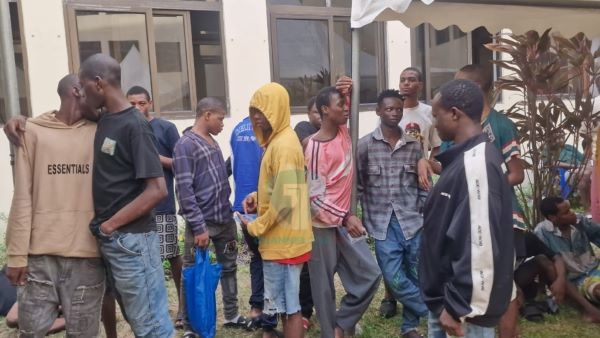Note to readers: As a community-funded paper, The Salt Lake Tribune has chronicled Utah’s housing crisis for years, but also looks to find solutions. In this series of stories, “ Building Options, ” we’ll look to outline the issue and why it matters, but also how a state program is showing signs of chipping away at the affordability crisis. When Brevin Heutink and his wife moved from Washington State two years ago, they had few options to buy and build equity.
They found Lone Rock Condos in Hurricane, which Heutink said was “pretty much our only option” on a single income. “I make decent money, but it’s tough, you know,” he said. “Everything’s expensive.

” (Mark Eddington | The Salt Lake Tribune) Brevin Heutink, a commercial truck driver who lives at Lone Rock with his wife and two children. Lone Rock Condos, located just north of Old Highway 91 near the intersection with Highway 9, are priced around $260,000 – far below the median sales price in both Washington County and the state as a whole, based on Redfin and Utah Association of Realtors data. The development got incentives from the Hurricane, city planner Fred Resch III.
Hurricane officials approved a zone change to allow for about 65 additional units, Resch said, and permitted the construction of four-story buildings instead of the city’s three-story maximum. The extra level improves efficiency and reduces construction costs, he said. Intentional rezoning for higher densities is among more than two dozen strategies that Utah’s largest cities and counties can implement to comply with the state’s moderate-income housing program .
The city has implemented seven strategies overall, Resch said, including eliminating some fees for accessory dwelling units like granny flats, reducing regulations on multi-family housing in some areas, evaluating city-owned property for potential affordable housing projects and capping the number of licenses for entire-home short-term rentals. “We want to be good players with the state, and we were already leaning toward doing a lot of the strategies” when the state added accountability measures to the moderate-income housing program a few years ago, he said. (Jud Burkett | Special to The Tribune) Construction continues on a four-story condominium building in the Lone Rock Condominium complex in Hurricane, Thursday, March 20, 2025.
Though Hurricane faces the same problems with housing costs as St. George, the city has seen increased development, Resch said, and prices have mostly hit a plateau. A lot of that increased building is because St.
George and Washington City are filling up, he said, while Hurricane has more developable space. The room for Greenfield development – or building on previously undeveloped space – makes building housing easier than “trying to redevelop what’s already there,” Resch said. That ease has given people like Heutink and Freddy Mendez the chance to buy instead of continuing to rent.
Before he bought his condo, Mendez lived with six or seven roommates to save money. The Arizona native moved to Hurricane to study at Southern Utah University and has owned his home for a little more than a year. Even though Lone Rock Condos aren’t the white-picket-fence stereotype of the American Dream, they’re a chance to build equity, both men said.
“I would encourage anyone, even if they’re starting out, to get a condo or something like this because at least you’re building equity,” Heutink said. “You’re not paying off someone else’s mortgage.”.
Politics

Everything’s expensive,’ but here’s how Hurricane helped boost housing affordability

Here’s how Hurricane helped boost housing affordability by working with developers and using incentives provided by Utah.















